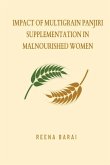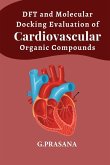Chronic obstructive pulmonary disease (COPD) is a chronic respiratory disease characterized by persistent airflow limitation and is often associated with other comorbidities, including osteoporosis. Osteoporosis is a skeletal disorder that results in a reduction in bone density and an increased risk of fractures. COPD-associated osteoporosis is a significant clinical problem that can lead to increased morbidity and mortality in COPD patients. The molecular mechanisms underlying COPD-associated osteoporosis are complex and multifactorial. Several factors have been implicated in the pathogenesis of COPD-associated osteoporosis, including systemic inflammation, oxidative stress, and alterations in bone remodeling. One of the primary mechanisms contributing to COPD-associated osteoporosis is systemic inflammation. COPD is associated with a persistent inflammatory response in the lungs and the systemic circulation, which is characterized by increased levels of pro-inflammatory cytokines, such as tumor necrosis factor-alpha (TNF-¿), interleukin-6 (IL-6), and interleukin-1 (IL-1). These cytokines can activate osteoclasts, the bone-resorbing cells, and inhibit osteoblasts, the bone-forming cells, resulting in an imbalance in bone remodeling and subsequent bone loss. Oxidative stress is another important mechanism in the development of COPD-associated osteoporosis. COPD patients have increased oxidative stress due to the chronic exposure to cigarette smoke and other environmental pollutants. Oxidative stress can lead to the activation of osteoclasts and the inhibition of osteoblasts, leading to bone loss. In conclusion, the molecular mechanisms underlying COPD-associated osteoporosis are complex and multifactorial. Systemic inflammation, oxidative stress, and alterations in bone remodeling are all significant factors in the pathogenesis of COPD-associated osteoporosis. Other factors such as vitamin D deficiency, hypogonadism, and glucocorticoid therapy also contribute to the development of osteoporosis in COPD patients. A better understanding of these molecular mechanisms is necessary to develop effective therapies for the prevention and treatment of osteoporosis in COPD patients.








